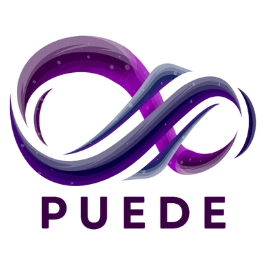Building Efficient Teams: Workflow Optimization Solutions That Work
Introduction
Efficiency is the key to a successful and productive team. Whether in a corporate setting, a small business, or a remote workforce, optimizing workflows is essential to achieving organizational goals. Inefficient workflows result in wasted time, decreased morale, and higher operational costs. By implementing workflow optimization solutions, businesses can enhance productivity, reduce bottlenecks, and create a more collaborative work environment.
However, workflow optimization is not just about using tools—it requires a strategic approach that involves understanding team dynamics, setting clear objectives, and continuously refining processes. In this guide, we explore best practices for building efficient teams, focusing on workflow optimization strategies that drive measurable results and ensure long-term success.
The Importance of Workflow Optimization
Why Workflow Optimization Matters
An optimized workflow ensures that employees complete tasks in the most effective and streamlined manner possible. When workflows are inefficient, teams struggle with delays, miscommunication, and an inability to scale operations effectively. Some key benefits of workflow optimization include:
- Increased Productivity: Employees can focus on high-value tasks rather than redundant processes.
- Better Collaboration: Clearly defined workflows improve team coordination and reduce confusion.
- Reduced Errors: Automated and structured processes minimize human error and inconsistencies.
- Cost Savings: Time-efficient workflows reduce unnecessary expenses and resource waste.
- Improved Employee Satisfaction: A well-structured workflow reduces frustration and enhances job satisfaction, leading to higher retention rates.
Identifying Workflow Inefficiencies
Before optimizing workflows, businesses need to identify existing inefficiencies. Some of the most common indicators of workflow issues include:
- Redundant Tasks: Employees repeatedly perform the same tasks manually when automation could simplify the process.
- Bottlenecks: Tasks pile up at specific points in the process, causing unnecessary delays.
- Poor Communication: Miscommunication between teams leads to missed deadlines and duplicated efforts.
- Lack of Clear Roles: Employees are unclear about their responsibilities, leading to confusion and inefficiency.
- Excessive Meetings: Meetings that could be emails waste time and disrupt productivity.
- Difficulty Scaling: A business struggles to grow because its workflow processes are not designed to handle increased demand.
Strategies for Workflow Optimization
-
Automate Repetitive Tasks
Automation reduces the burden of repetitive tasks, freeing up employees for more strategic work. Some of the most effective ways to automate workflows include:
- Email Responses: Use automated responses for frequently asked questions to reduce response time.
- Data Entry: Implement software that auto-fills forms and records data to reduce manual work.
- Task Assignment: Use project management tools to assign and track tasks automatically.
- Payroll and HR Processes: Automate salary calculations, time tracking, and benefits management to reduce administrative overhead.
-
Implement Project Management Tools
Using the right project management software ensures that teams stay organized and on track. Some of the most widely used tools for workflow optimization include:
- Trello: Ideal for visual task management with drag-and-drop features.
- Asana: Helps teams track projects, set priorities, and automate task assignments.
- Monday.com: A versatile tool for workflow customization and cross-functional team collaboration.
- Jira: Designed for agile project management and development teams looking to track progress efficiently.
-
Streamline Communication Channels
Effective communication is vital to workflow efficiency. Best practices for improving communication include:
- Use Collaboration Platforms: Slack, Microsoft Teams, or Zoom can centralize team discussions and reduce unnecessary email clutter.
- Reduce Email Overload: Encourage direct messaging or project management tools for quick inquiries rather than long email threads.
- Set Clear Communication Guidelines: Define when to use email, chat, or in-person meetings to avoid wasted time.
- Encourage Regular Check-ins: Daily or weekly check-ins keep teams aligned without excessive meetings.
-
Define Clear Roles and Responsibilities
When employees know exactly what they need to do, productivity improves. Strategies to achieve role clarity include:
- Job Descriptions: Clearly define each employee’s responsibilities to ensure accountability.
- Task Ownership: Assign specific team members to lead tasks and be responsible for their completion.
- Accountability Structures: Implement tracking systems that monitor progress and ensure deadlines are met.
- Cross-Training: Train employees in multiple roles to enhance flexibility and resilience in case of unexpected absences or changes.
-
Foster a Culture of Continuous Improvement
Workflow optimization is not a one-time effort—it requires continuous evaluation and improvement. Steps to encourage continuous improvement include:
- Solicit Employee Feedback: Employees often have valuable insights into workflow inefficiencies and areas for improvement.
- Regularly Review Processes: Conduct workflow audits to identify potential enhancements and adjust processes accordingly.
- Encourage Innovation: Reward employees who suggest process improvements to foster a culture of innovation.
- Invest in Professional Development: Training employees in new skills ensures they remain adaptable and efficient in evolving workflows.
Tools and Technologies for Workflow Optimization
-
Artificial Intelligence and Machine Learning
AI-powered tools can analyze workflows, predict inefficiencies, and provide automation solutions. Examples include:
- Chatbots for Customer Support: Reduce response time and free up human agents for complex queries.
- AI-Based Scheduling: Tools like Clockwise optimize meeting schedules and ensure efficient time allocation.
- Automated Reporting: AI generates reports based on real-time data, allowing teams to make data-driven decisions.
-
Cloud-Based Collaboration Software
Cloud solutions ensure that teams can access and share files effortlessly. Popular tools include:
- Google Workspace: Enables real-time collaboration on documents, spreadsheets, and presentations.
- Dropbox: Secure file storage and sharing for seamless remote collaboration.
- Notion: A workspace for team collaboration, project documentation, and task tracking.
-
Workflow Management Software
Automating workflows ensures tasks move smoothly from one stage to another. Examples include:
- Zapier: Connects different apps and automates repetitive tasks across software platforms.
- Airtable: Combines spreadsheet and database functionality for better workflow tracking and project management.
- Smartsheet: Ideal for teams managing multiple projects with complex dependencies.
Measuring Workflow Optimization Success
Key Performance Indicators (KPIs)
To measure the success of workflow optimization efforts, businesses should track:
- Task Completion Time: Reduction in time taken to complete tasks.
- Employee Satisfaction Scores: Increased morale and job satisfaction.
- Error Rates: Reduction in mistakes due to automation and improved processes.
- Customer Satisfaction Ratings: Enhanced service levels and faster response times.
- Operational Costs: Savings achieved through efficiency gains and reduced waste.
Regular Assessments
- Quarterly Performance Reviews: Assess whether optimization strategies are effective and make adjustments as needed.
- Workflow Audits: Identify new areas for improvement and implement necessary changes.
- Feedback Surveys: Collect input from employees and customers to ensure workflow enhancements align with business goals.
Conclusion
Building efficient teams through workflow optimization is crucial for long-term business success. By identifying inefficiencies, implementing automation, leveraging technology, and fostering a culture of continuous improvement, businesses can enhance productivity and create a high-performing workforce.
Workflow optimization is an ongoing process that requires commitment and regular assessment. Businesses that take a proactive approach to refining operations will position themselves for sustained efficiency, agility, and success in an ever-evolving market.
Rene Ayala, Senior Consultant at PUEDE Business Consulting, helps business owners streamline operations, automate processes, and scale efficiently. With expertise in Zoho applications, QuickBooks Online, and strategic growth solutions, he empowers entrepreneurs to reclaim their time and boost profitability.



